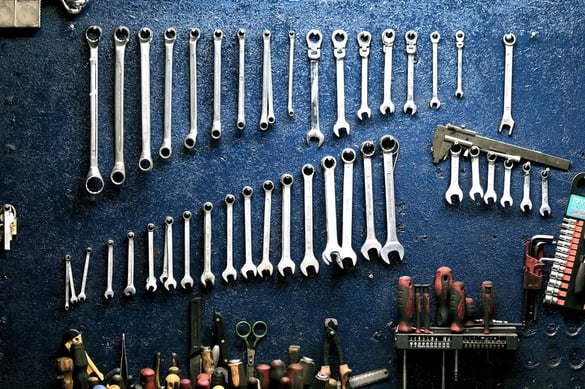
Happy 2018! If one of your New Year’s resolutions was to take better care of your car, we have you covered! Here are 10 things that you need to do for your vehicle every year.
Note: This post covers general maintenance. If you’re looking for specific recommendations for your make and model, look at your owner’s manual. Remember, if your vehicle is under warranty, following the manufacturer’s recommended service schedule is necessary to keep the warranty intact.
Every Month
1. Tires
Check your tire pressure and tread. Uneven wear means that you probably need your wheels realigned. You should also check your tires for bulges and bald spots, and replace them if necessary.
2. Oil
Your oil dipstick should have a “full” mark and an “add oil” mark. You’ll also want to change your oil if it is dirty or has become contaminated with gasoline.
3. Windshield Washer Fluid
If your reservoir is less than half-full, it’s time for a refill. If you’re losing fluid quickly, check the tank for cracks and leaks.
4. Lights
It’s easy not to notice if a headlight or tail light burns out. However, you can get a ticket for driving with a light out. Keeping your lights working is especially important in the winter when it grows dark earlier.
Every 3 Months
5. Transmission Fluid
If your vehicle starts to have trouble shifting, it may mean that your transmission fluid needs to be changed. Like your oil, you should check your transmission fluid to make sure it’s full and uncontaminated. Transmission fluid is dyed red or pink, so watch out for fluid that is dark or appears burned.
6. Power Steering Fluid
If it’s becoming harder to turn your wheels, it may be a sign that your power steering is low. Use the dipstick to check your fluid level. Also check for contamination. If there are pieces of rubber floating in your fluid, you should have it checked by a mechanic, who can identify the source of the contamination and replace failing parts.
7. Battery and Cables
Don’t get stuck with a dead battery this winter - or any time of the year. If your battery is at 80 degrees, a fully charged battery reads at 12.66 volts, while 11.89 is completely dead. A good battery will read above 12.4 volts.
If your battery goes dead, after recharging it, you’ll want to fully test it to see if it’s time for a replacement. Your dealership can do this for you.
Another common battery problem? Loose or corroded wiring between the battery and the starter. Ask your dealership about having this connection checked out.
8. Hoses and Belts
Check your hoses and belts to make sure they’re not cracked, brittle, frayed, loose, or showing other signs of excessive wear.
If you’re driving a vehicle with an interference engine, a broken timing belt can cause significant damage to your engine above and beyond the cost of the belt replacement.
A worn serpentine belt will cause increased stress to different parts of your engine, including the A/C, engine cooling system, power steering, and alternator. A broken serpentine belt can cause the electrical systems to fail and the engine to overheat, among other effects.
Every Year
9. Steering and Suspension
If your vehicle begins to ride rougher, have trouble cornering, or dips when you stop quickly, your suspension system may need attention. Your mechanic can help you with this issue.
10. Brakes
You should check your brake system every year. It’s also a good practice to have your brake linings, rotors, and drums inspected at each oil change.
Start 2018 Off Right
To schedule maintenance for your car, contact us online for our Golden Valley or Lakeville service locations. You can also reach us by phone: Golden Valley (763) 522-2000 or Lakeville (952) 469-1500.
And remember, maintenance is only as good as the vehicle it maintains. If you’re spending too much time or money on service, it’s time for a more reliable vehicle. A pre-owned luxury vehicle is often your best option for the features you want at a price you can afford.
Thinking about purchasing a used luxury car? Call us at (763) 522-2000 or visit our website to check out our inventory.







